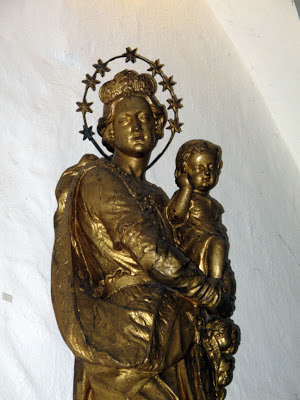The tour people seemed to make a big deal that we were going to lunch at a castle...but, really, it was hardly more than a manor house...
and lunch was served in the converted stables...
...and while some of the group toured the house (not worth it, they said...), I opted to enjoy the garden, which was still quite nice...
and then, of course, it was back to the bus...
...with the promise of another castle to tour...oh, goody....





























































